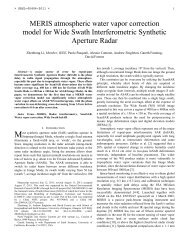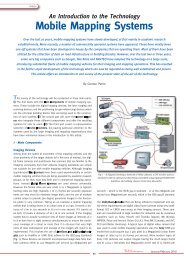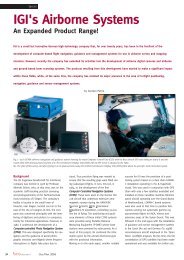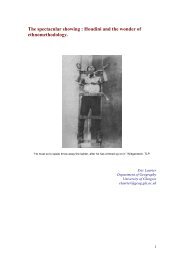Café Ethnography : the uses of tables and chairs
Café Ethnography : the uses of tables and chairs
Café Ethnography : the uses of tables and chairs
Create successful ePaper yourself
Turn your PDF publications into a flip-book with our unique Google optimized e-Paper software.
<strong>Café</strong> <strong>Ethnography</strong>:<br />
The authors <strong>of</strong> this article found <strong>the</strong> Flaming Cup whilst carrying out ethnographic<br />
fieldwork on a 'high tech' ICT project called 'Living Memory' (LiMe). There is not <strong>the</strong><br />
space here to do justice to <strong>the</strong> multiple ambitions <strong>of</strong> LiMe's 3 years <strong>of</strong> research which<br />
drew on <strong>the</strong> skills <strong>of</strong> concept designers, interaction designers, creative designers,<br />
s<strong>of</strong>tware engineers, prototype builders, programmers, web-site developers,<br />
information scientists, ergonomists, psychologists <strong>and</strong> more (however see {link to<br />
D2.4} <strong>and</strong> {link to LiMe website}. The particular 'slice <strong>of</strong> LiMe' we will present in<br />
this article is based on our ethnographic study <strong>of</strong> pre-existing communities <strong>of</strong> practice<br />
in a suburban neighbourhood <strong>and</strong> also describing what occurred when a number <strong>of</strong><br />
prototypes were introduced to <strong>the</strong> 'locals' (see also (Whyte et al. Forthcoming)).<br />
During our fieldwork we dealt with a number <strong>of</strong> community settings (primary<br />
schools, a small public lending library, a large shopping mall, a medical centre, 3<br />
pubs, a bi-annual charity fair, a historic building which housed a local history society,<br />
church societies, noticeboards <strong>and</strong> a residential street). 1 As you may have guessed <strong>the</strong><br />
place we would like to concentrate on for a number <strong>of</strong> reasons is <strong>the</strong> Flaming Cup<br />
café. As it happens <strong>the</strong> Flaming Cup also served as a site for carrying out field trials<br />
<strong>of</strong> one <strong>of</strong> <strong>the</strong> LiMe prototypes {link to D2.4, LP3 & LP4 testing}). Testing a<br />
prototype electronic c<strong>of</strong>fee table in a café provided a wonderful opportunity to do a<br />
kind <strong>of</strong> 'breaching experiment' in <strong>the</strong> socio-material order <strong>of</strong> such a place. An<br />
intervention which sharpened many <strong>of</strong> our observations <strong>of</strong> <strong>the</strong> ordinary functioning <strong>of</strong><br />
<strong>the</strong> cafe which we will present here. However before we move on to our ethnographic<br />
work it is worth reviewing some <strong>of</strong> <strong>the</strong> existing literature on <strong>the</strong> social life <strong>of</strong> cafes,<br />
<strong>the</strong> particular topics it has raised <strong>and</strong> <strong>the</strong> concerns with public space that arose out <strong>of</strong><br />
our collaborative research.<br />
A brief excursion on <strong>the</strong> historical rise <strong>of</strong> <strong>the</strong> café.<br />
Cafes <strong>and</strong> bars came to replace <strong>the</strong> street as <strong>the</strong> primary place for <strong>the</strong> common<br />
ga<strong>the</strong>ring <strong>of</strong> town <strong>and</strong> city residents in <strong>the</strong> late 17 th <strong>and</strong> early 18 th century in Britain,<br />
Germany, <strong>and</strong> particularly 19 th century France <strong>and</strong> Italy. In 19 th century Britain, long<br />
after <strong>the</strong> golden epoch <strong>of</strong> <strong>the</strong> c<strong>of</strong>fee ho<strong>uses</strong>, cafes <strong>and</strong> later tea rooms were split <strong>of</strong>f<br />
from bars which sold liquor, while in France <strong>and</strong> Italy no such strong division was<br />
made. Without going into any great detail it is worth noting that as a result <strong>of</strong> this<br />
historical evolution cafes in Britain have some key differences from those found in<br />
o<strong>the</strong>r countries in Europe by dint <strong>of</strong> this lengthy separation from <strong>the</strong> consumption <strong>of</strong><br />
alcohol. Cafes in <strong>the</strong> UK have thus tended to specialise in providing tea, c<strong>of</strong>fee <strong>and</strong><br />
o<strong>the</strong>r s<strong>of</strong>t drinks, along with simple dishes. 2 They tend to keep <strong>the</strong> same opening<br />
times as high street shops (i.e. 9-5.30-ish <strong>and</strong> Monday to Saturday). In <strong>the</strong> last decade<br />
<strong>of</strong> <strong>the</strong> 20 th century in <strong>the</strong> UK cafes <strong>and</strong> bars have begun to merge into places closer to<br />
<strong>the</strong>ir French or Italian counterparts. Bars have extended <strong>the</strong>ir function into <strong>the</strong><br />
1 Our approach to <strong>the</strong> web <strong>of</strong> communties <strong>of</strong> practice occurring in our suburb was similar to an old, <strong>and</strong><br />
now <strong>of</strong>ten ignored, body <strong>of</strong> community studies carried out in <strong>the</strong> early 20 th century by sociologists <strong>and</strong><br />
geographers (i.e. (Lynd <strong>and</strong> Lynd 1929), (Stacey 1960; Whyte 1943) <strong>and</strong> for a recent review see<br />
(Travers 1999)). One <strong>of</strong> <strong>the</strong> few later 20 th century studies being <strong>the</strong> popular book 'The Organization<br />
Man' (Whyte 1957))<br />
2 In fact <strong>the</strong>y had many links with <strong>the</strong> temperance movement <strong>and</strong> were seen as a sober alternative to<br />
bawdy bars where alcohol was served. Not only that <strong>the</strong>y also provided a public ga<strong>the</strong>ring place more<br />
open to women as both servers <strong>and</strong> customers (Kinchin 1991).<br />
3
















